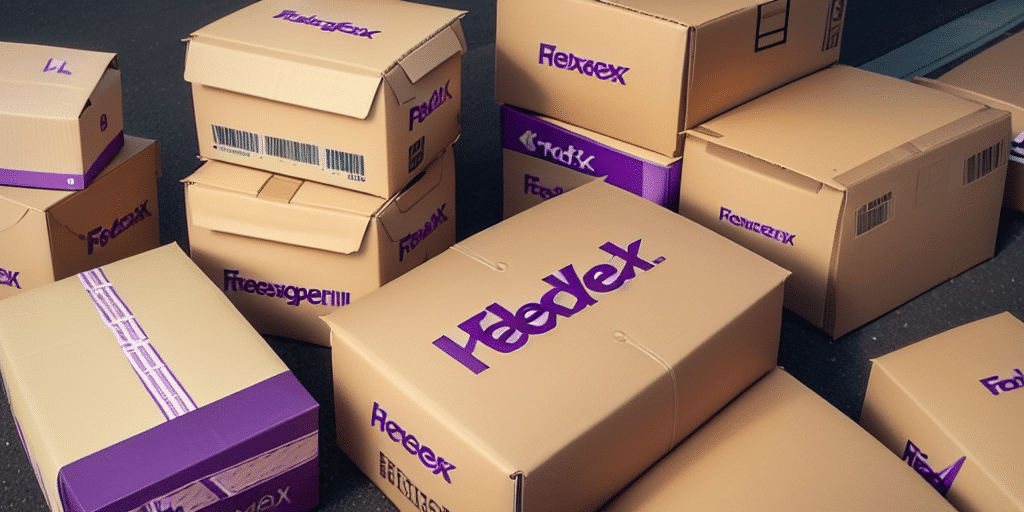How to Customize Package Types on FedEx Ship Manager
For businesses that regularly ship products, customizing package types in FedEx Ship Manager can lead to significant savings in both time and money. This comprehensive guide delves into the importance of package customization, the steps to effectively tailor your package types, common challenges you might face, and best practices to ensure a streamlined shipping process.
Importance of Customizing Package Types on FedEx Ship Manager
Customizing package types within FedEx Ship Manager is essential for several reasons:
- Accurate Shipping Rates: Ensures you are charged correctly based on the package's size and weight.
- Proper Handling: Guarantees that packages are treated appropriately during transit, reducing the risk of damage.
- Enhanced Tracking: Provides precise tracking information, improving customer satisfaction.
According to a Business Insider report, businesses that optimize their shipping processes can reduce shipping costs by up to 15%. Failing to customize package types may lead to incorrect shipping fees, delays, and dissatisfied customers, ultimately impacting your bottom line.
Streamlining the Shipping Process
By accurately defining package types, businesses can automate shipping workflows, leading to faster processing times and fewer errors. This streamlining is crucial for maintaining efficient operations, especially during peak seasons.
Improving Customer Experience
Accurate package information allows customers to receive real-time updates on their shipments, fostering trust and enhancing the overall shopping experience.
Understanding Default Package Types and the Need for Customization
FedEx Ship Manager offers a set of predefined package types, including:
- Envelope
- Pak
- Box
- Tube
While these options cover many shipping scenarios, they may not suit all business needs. For instance, irregularly shaped or fragile items often require specialized packaging to ensure safe delivery.
Limitations of Default Package Types
Default package types may not account for specific dimensions or the need for additional padding, leading to increased shipping costs or potential damage during transit.
Benefits of Customizing Package Types
Custom package types allow businesses to tailor their shipping strategy, ensuring that each package is optimized for its contents and destination. This customization can lead to cost savings, reduced shipping times, and improved delivery accuracy.
How to Customize Package Types in FedEx Ship Manager
Customizing package types in FedEx Ship Manager involves a straightforward process:
- Log In: Access your FedEx Ship Manager account.
- Navigate to Admin: Click on the "Admin" tab in the top menu.
- Select Package Types: From the dropdown, choose "Package Types."
- Add New Package Type: Click on "Add Package Type" and input the necessary details, including name and dimensions.
- Save Changes: Confirm and save the new package type for future use.
It's advisable to refer to the official FedEx packaging guidelines to ensure compliance with their standards.
Setting Accurate Dimensions and Weight
Precise measurements are crucial. Overestimating the size can lead to unnecessary costs, while underestimating may result in delays or damage.
Assigning Proper Labels
Proper labeling based on package type ensures that FedEx handles the package correctly, adhering to any special requirements.
Best Practices for Managing Customized Package Types
To maximize the benefits of customized package types, follow these best practices:
- Regular Reviews: Periodically assess and update package types to reflect changes in your product line or shipping needs.
- Stay Informed: Keep up-to-date with FedEx's latest shipping policies and rate changes by visiting their official rate and service guide.
- Employee Training: Ensure that all staff are trained on how to select and use customized package types effectively.
- Monitor Performance: Use FedEx Ship Manager's tracking and reporting tools to identify any issues related to package types and address them promptly.
Implementing Quality Control Measures
Regular quality checks can help identify discrepancies in package handling and ensure that the customized types continue to meet your business needs.
Leveraging Technology
Integrate FedEx Ship Manager with your inventory and order management systems to automate package type selection based on predefined criteria.
Common Issues and Troubleshooting
Despite careful customization, businesses may encounter challenges such as:
- Inaccurate Shipping Rates: Caused by incorrect package dimensions or weight entries.
- Delayed Shipments: Resulting from package types that do not comply with FedEx requirements.
- Damaged Packages: Due to inadequate packaging for fragile items.
To address these issues:
- Verify all package dimensions and weights before shipping.
- Consult FedEx support for assistance with compliance and best practices.
- Invest in high-quality packaging materials for sensitive items.
For additional support, refer to FedEx's customer support.
Ensuring Compliance with FedEx Standards
Regularly review FedEx's packaging guidelines to ensure that your customized package types remain compliant with any updates or changes.
Utilizing Feedback Loops
Collect feedback from your shipping team and customers to identify areas for improvement in your packaging strategy.
Conclusion
Customizing package types in FedEx Ship Manager is a strategic move that can enhance your shipping efficiency, reduce costs, and improve customer satisfaction. By understanding the importance of package customization, following a systematic approach to creating and managing package types, and adhering to best practices, businesses can optimize their shipping operations effectively.
Investing time in refining your package types not only streamlines your logistics but also contributes to a more sustainable and customer-centric business model.






















